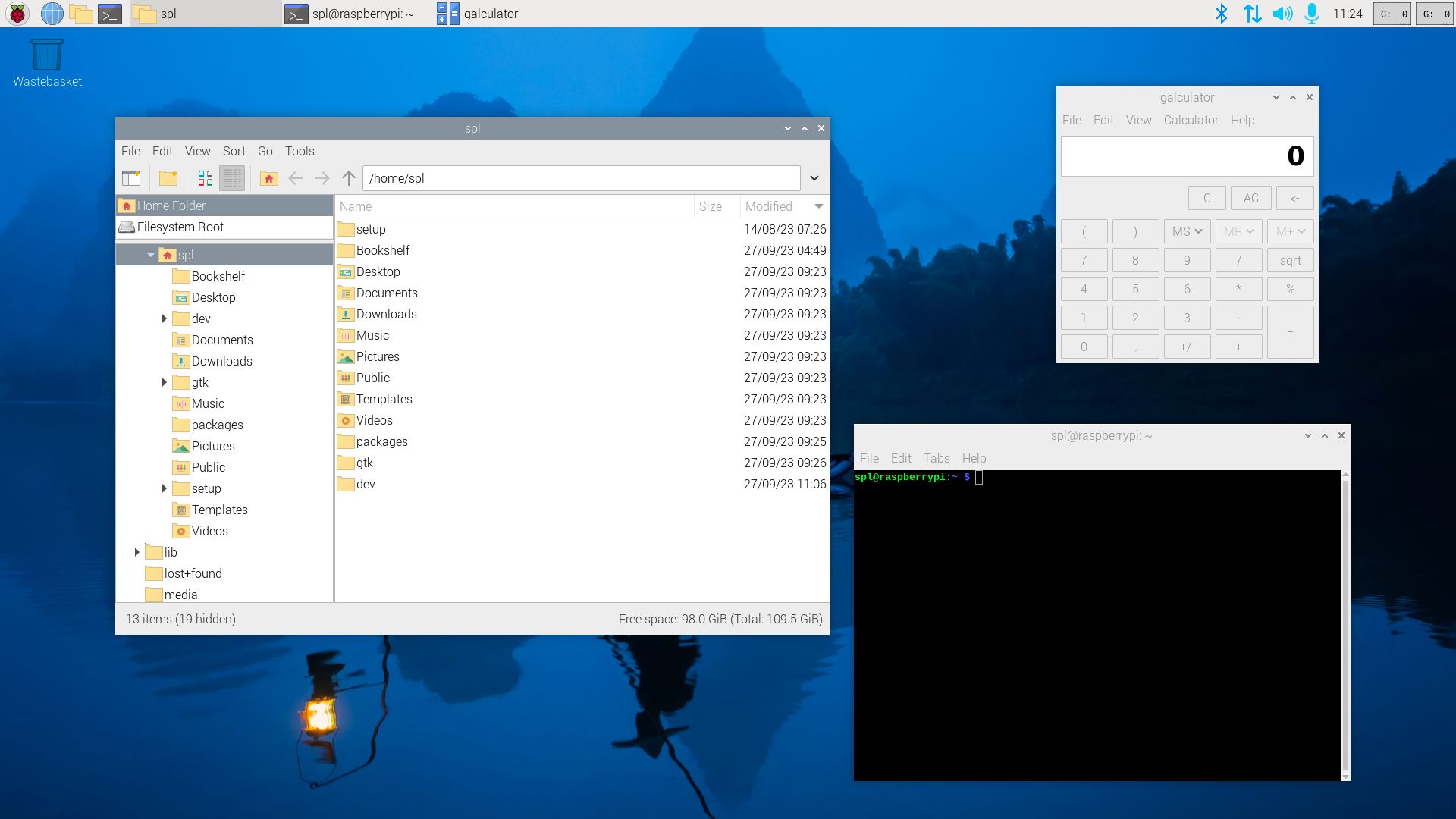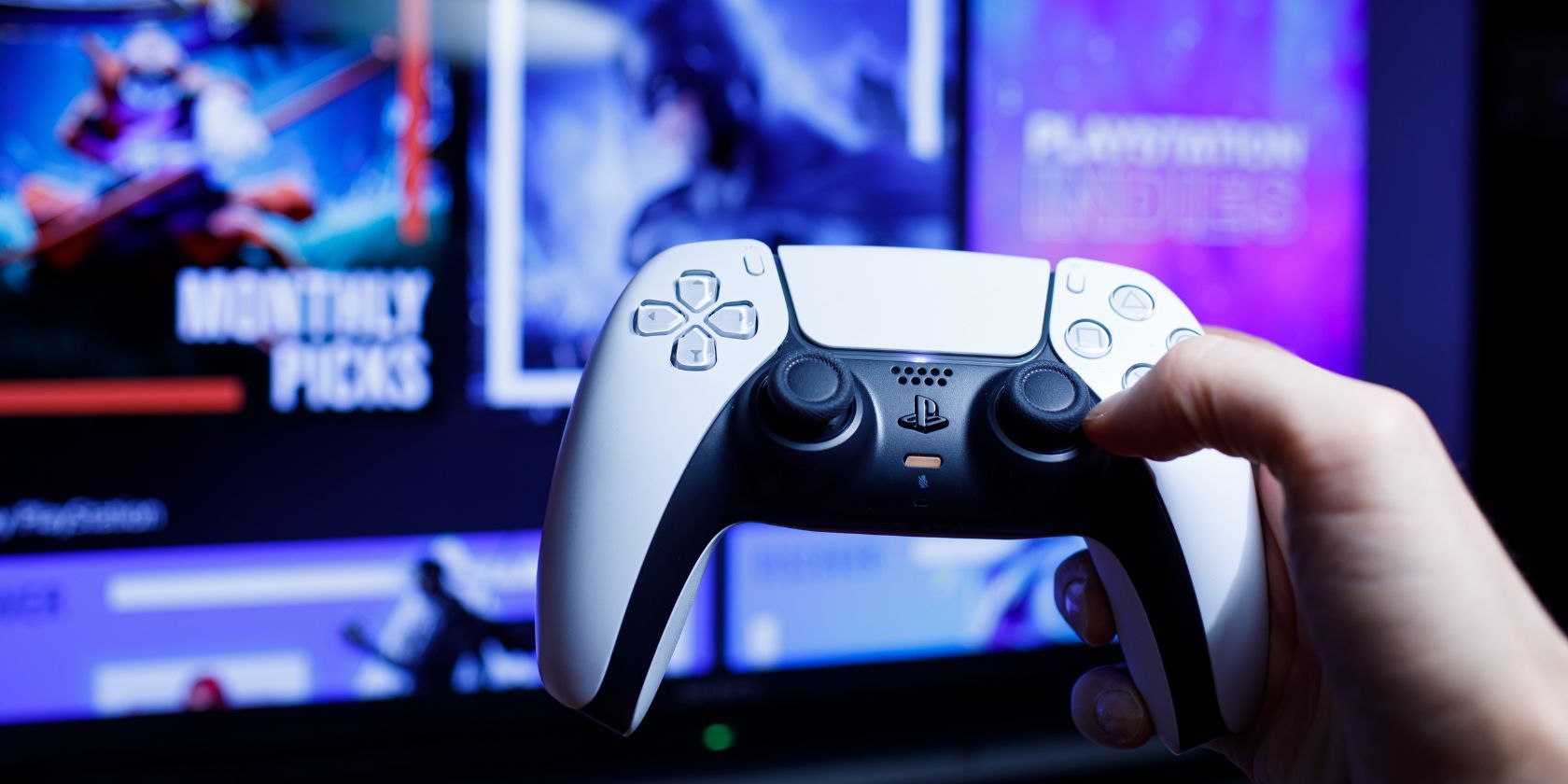Key Takeaways
- The Raspberry Pi 5 brings superior performance for retro gaming, running demanding games with little glitching.
- Machine learning projects benefit greatly from the Pi 5’s increased processing power, providing faster answers to chatbot queries.
- The Pi 5 revolutionizes computer vision with increased processing power and the ability to connect two cameras simultaneously.
With a far more capable processor and a bunch of extra features, the Raspberry Pi 5 offers far more power than previous models. Let’s take a look at reasons to upgrade to a Pi 5, project by project.
1. Retro Gaming With Raspberry Pi 5
Not only is the Pi 5’s Broadcom BCM2712 system-on-chip up to three times faster than the Raspberry Pi 4 but the Pi 5 boasts a new VideoCore VII GPU, which supports OpenGL ES 3.1 and Vulkan 1.2 standards. So, it clearly has more processing and graphical grunt for emulating some of the more demanding retro game systems.
The Raspberry Pi 4 struggled to emulate classic consoles such as the Nintendo 64, Sega Dreamcast, and Sony PSP, but the Pi 5 does a far better job. It can run graphically demanding 3D games like Rogue Squadron and GoldenEye 007 on the N64 at a decent frame rate (up to 60fps), with little to no glitching,
The Pi 5 can also run games for the Nintendo GameCube and Wii (with the Dolphin emulator) and even the Switch (with the Yuzu emulator), albeit with mixed results. Tweaking the resolution and other settings may improve the playability.
Whichever Raspberry Pi games emulation system you opt to use, such as Recalbox or RetroPie, there’s no doubt that the Raspberry Pi 5 offers far superior performance for retro gaming. Via its twin micro HDMI outputs, it can even drive dual 4K displays at 60Hz.
2. Raspberry Pi Machine Learning / AI
Requiring plenty of processing power, machine learning and artificial intelligence projects should benefit greatly from the Raspberry Pi 5’s hardware upgrades. So this is a great reason to buy a Pi 5.
The technology behind AI chatbots, large language models (LLMs), can be run on a Raspberry Pi 4. While it produced usable results in our testing, it could take up to two hours to come up with an answer to a query. With the Pi 5’s increased processing power and faster LPDDR4X-4267 SDRAM, you can expect to get answers a lot faster.
While earlier Raspberry Pi models could run pre-trained machine learning models, actual on-board training of them using neural networks wasn’t really feasible. That should change on the Raspberry Pi 5, especially with the aid of a Google Coral Tensor Processing Unit (TPU). Developer Jeff Geerling managed to connect a Coral Mini PCIe Accelerator to the Pi 5’s new PCIe slot and get it up and running.
3. Computer Vision
One of the most popular uses of machine learning is computer vision, used to detect and identify items or faces in the video feed from a camera based on machine learning models trained with existing images.
In this area, the Pi 5 should be a game-changer—not only due to its increased processing power but also its twin four-lane MIPI connectors. These dual-purpose CSI/DSI slots can each be used to connect a camera module or portable display. So, for the first time in the Raspberry Pi range, the Pi 5 enables you to connect two cameras simultaneously.
In addition, as is the case for machine learning applications in general, the Pi 5’s PCIe slot can be used to connect an AI accelerator to aid the main processor. In short, upgrading to a Pi 5 for computer vision projects is a no-brainer.
Another very popular use for a Raspberry Pi is to create a custom-built home media center for all your entertainment needs. You can watch movies, TV shows, and videos, along with some streamed TV channels. In addition, it’s possible to add media from one or more network-attached servers (NAS) using the Samba sharing protocol.
While several options are available, most Raspberry Pi media center solutions use the Kodi media player. The most popular are LibreELEC and OSMC.
Typically, a Raspberry Pi media center would be based around a Pi 4, but the more powerful Raspberry Pi 5 should make it run even smoother and faster, in particular benefiting from the Pi 5’s HEVC hardware video decoding and up to 1080p60 streaming playback. It’s not as game-changing as for some other projects, but upgrading your media center to use a Pi 5 is still worthwhile.
5. Desktop PC Replacement
The Raspberry Pi has long been touted as a possible substitute for a standard desktop PC, but the Pi 5 is a more serious contender. As with other Raspberry Pi models, it is able to run a range of operating systems, including Ubuntu Linux and the official, Debian-based Raspberry Pi OS.
The latest “Bookworm” version of Raspberry Pi OS offers a slick desktop GUI experience on the Raspberry Pi 5. Now, making use of the Wayland windowing system for improved performance compared to the previous X11 system, it all works snappily in general desktop usage with hardly any lag, even when multitasking.
Raspberry Pi OS and Ubuntu both offer a wide range of desktop applications to use, as well as giving you direct access to the Linux command-line terminal to get under the hood of the system and use powerful text-based commands.
6. Smart Home Automation With Raspberry Pi 5
Installing Home Assistant on your Raspberry Pi for home automation makes it easier to control all the smart devices in your home, including smart plugs, lamps, and switches. While official support for the Pi 5 is set to be added to the Home Assistant OS, with a stable release expected in early 2024, it is possible for advanced users to install the home automation software manually.
While Home Assistant is not particularly resource-intensive software, the Pi 5’s improved performance should mainly benefit users who have Home Assistant instances with a lot of automation, devices, and add-ons. The ability to add an NVMe SSD via the PCIe slot (with M.2 HAT) should also be of benefit. So it’s worth considering an upgrade to a Pi 5 for your smart home setup.
7. Web or Data Server
The Raspberry Pi is an affordable option for hosting your own web server, with the advantage that it gives you full control and the ability to make custom upgrades. It can be used to host a general website or an array of Raspberry Pi self-hosting projects such as Nextcloud, Jellyfin, and Photoprism.
The Pi 5’s increased processing power makes it more feasible to run more operations on the server at one time and enable access for a larger number of users. Increased storage can be provided by an NVMe SSD connected to its PCIe slot (via an M.2 HAT).
8. Raspberry Pi 5 as a Minecraft Game Server
Simply put, upgrading your Raspberry Pi Minecraft server to a Raspberry Pi means better support and faster processing, which in turn means smoother game play and potentially more players enjoying the game together.
Other multiplayer network games can also be set up on the Raspberry Pi and benefit from Pi 5’s upgraded hardware. Open-source ports of Quake, Civilization, Doom, and Open TTD can be installed as game servers on your Raspberry Pi.
While not every project will benefit from the addition of a Raspberry Pi 5, those that are more demanding, require greater processing power, and upgraded hardware capabilities will run faster and smoother—so it’s well worth upgrading to a Raspberry Pi 5 for these kinds of projects.







